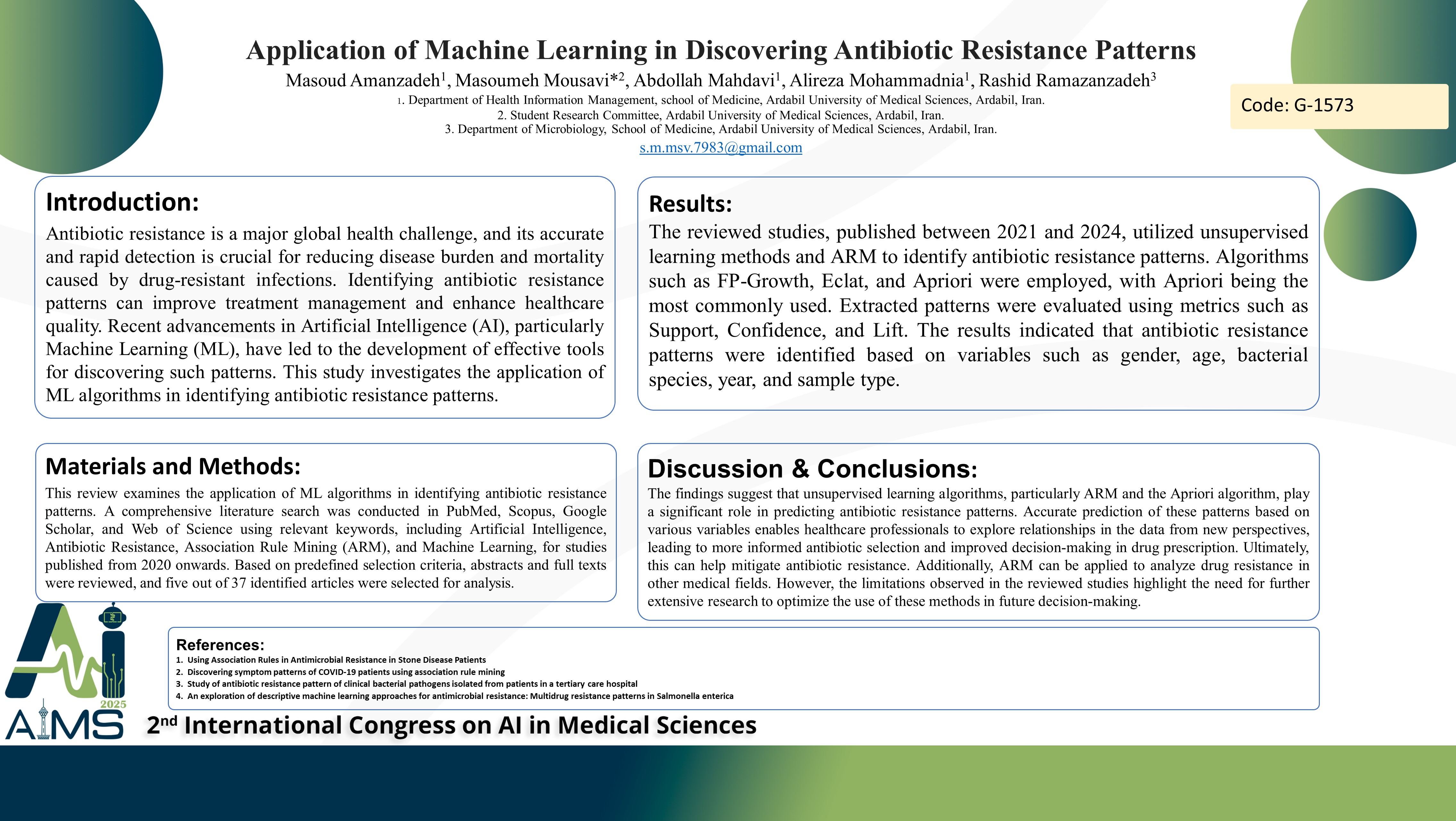کاربرد یادگیری ماشین در کشف الگوهای مقاومت آنتی بیوتیکی
کد: G-1573
نویسندگان: Masoud Amanzadeh, Masoumeh Mousavi * ℗, Abdollah Mahdavi, Alireza Mohammadnia, Rashid Ramazanzadeh
زمان بندی: زمان بندی نشده!
برچسب: کشف و طراحی دارو
دانلود: دانلود پوستر
خلاصه مقاله:
خلاصه مقاله
Background and aims: Antibiotic resistance is a major global health challenge, and its accurate and rapid detection is crucial for reducing disease burden and mortality caused by drug-resistant infections. Identifying antibiotic resistance patterns can improve treatment management and enhance healthcare quality. Recent advancements in Artificial Intelligence (AI), particularly Machine Learning (ML), have led to the development of effective tools for discovering such patterns. This study investigates the application of ML algorithms in identifying antibiotic resistance patterns. Method: This review examines the application of ML algorithms in identifying antibiotic resistance patterns. A comprehensive literature search was conducted in PubMed, Scopus, Google Scholar, and Web of Science using relevant keywords, including Artificial Intelligence, Antibiotic Resistance, Association Rule Mining (ARM), and Machine Learning, for studies published from 2020 onwards. Based on predefined selection criteria, abstracts and full texts were reviewed, and five out of 37 identified articles were selected for analysis. Results: The reviewed studies, published between 2021 and 2024, utilized unsupervised learning methods and ARM to identify antibiotic resistance patterns. Algorithms such as FP-Growth, Eclat, and Apriori were employed, with Apriori being the most commonly used. Extracted patterns were evaluated using metrics such as Support, Confidence, and Lift. The results indicated that antibiotic resistance patterns were identified based on variables such as gender, age, bacterial species, year, and sample type. Conclusion: The findings suggest that unsupervised learning algorithms, particularly ARM and the Apriori algorithm, play a significant role in predicting antibiotic resistance patterns. Accurate prediction of these patterns based on various variables enables healthcare professionals to explore relationships in the data from new perspectives, leading to more informed antibiotic selection and improved decision-making in drug prescription. Ultimately, this can help mitigate antibiotic resistance. Additionally, ARM can be applied to analyze drug resistance in other medical fields. However, the limitations observed in the reviewed studies highlight the need for further extensive research to optimize the use of these methods in future decision-making.
کلمات کلیدی
Machine Learning, Unsupervised Learning, Antibiotic Resistance
